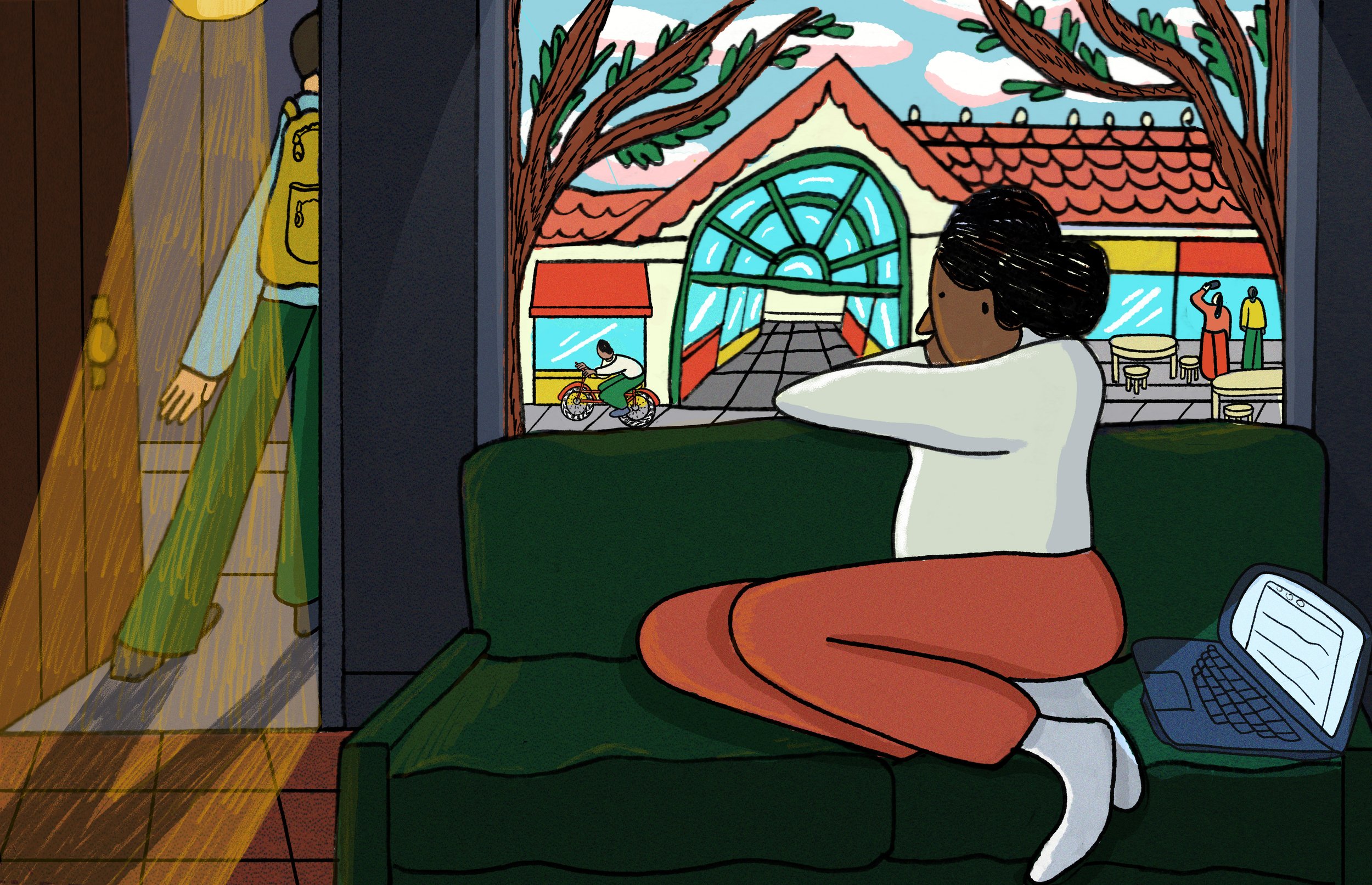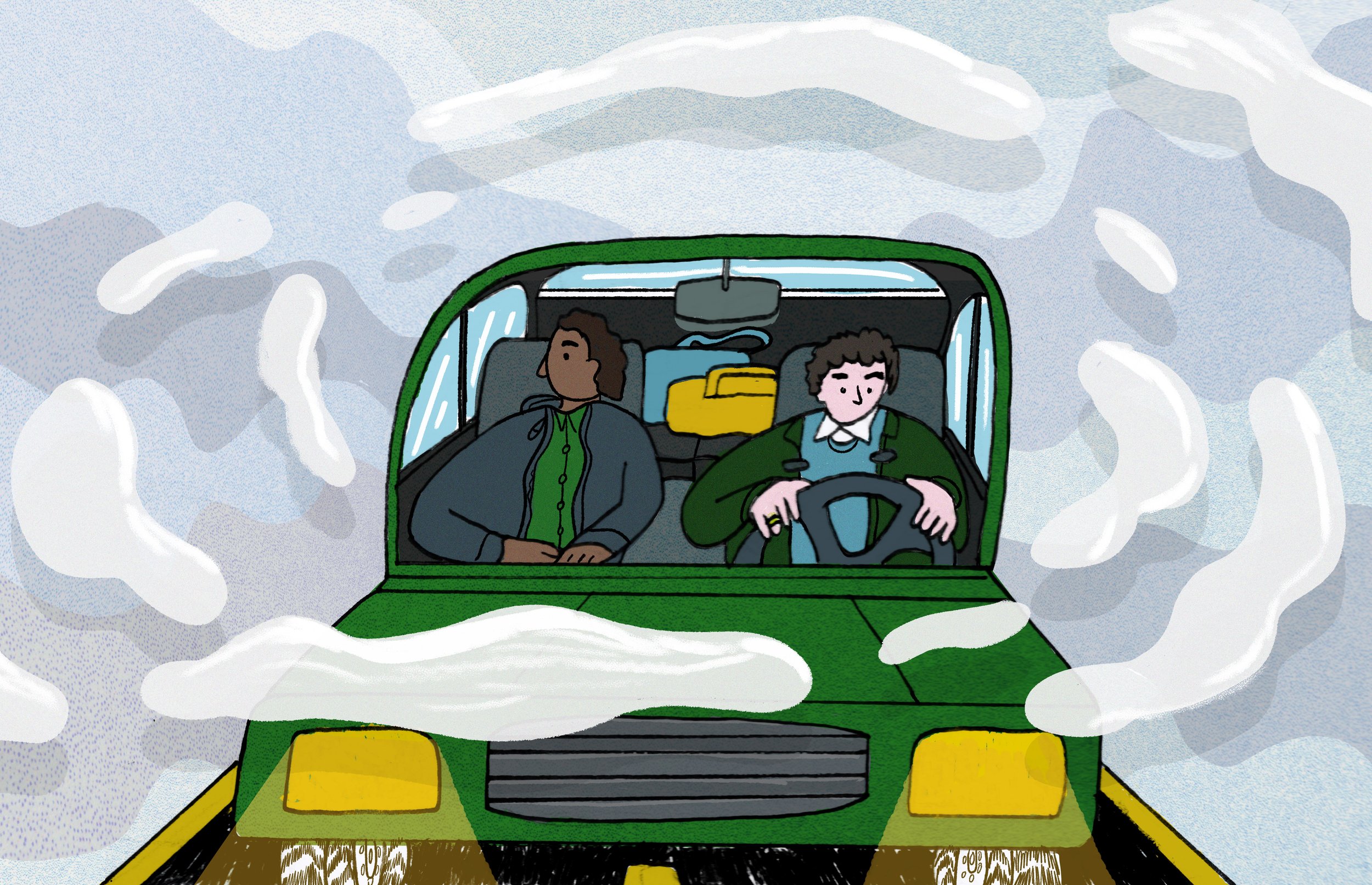8 p.m. in Vesterbro

8 p.m. in Vesterbro is amber light, warm breezes, and tattooed limbs. I was walking to Islands Brygge in the summer sun, thrilled by the slant and glow of the evenings at 55° north latitude—over the train tracks, across Bryggebroen, and on over the harbor, narrow and sparkling and splashing with swimmers.
I stood below the elevated Cykelslangen, the bicycle highway that curves around the mall. I don’t know why I looked up—perhaps the late light playing high on the wall’s orange brick caught my eye. It was a perfect stage for shadowplay—the highway’s pilings and railings in clear black relief. Pedaling shadows of cyclists came in little waves.
A man sitting tall, back straight, loose pant legs flapping. A petite woman, hair flying like flames, pushing a Christiania cargo bike. Three women in a row riding Dutch bikes, each with a basket in front and an empty rack at the back. A man alone, stoic and pensive, heading home from work. Another man on a foldable: gangly and too big for its small frame and wheels. His son in the slipstream, sporting backpack and helmet. A woman, lithe and graceful, hair in a high bun, head and nose and neck silhouetted like black ink on Grecian pottery.
Everyone doing their usual—commuting home, meeting friends for drinks, heading out to do the shopping, taking kids home from swimming practice or piano lessons. How many shadows play along this very wall every clear evening?
I was in a mood to see shadows. I’d had two beers at WarPigs, and I don’t think I’d have noticed otherwise (two beers at WarPigs is like three or four Carlsbergs). I’d reached the end of a month-long teaching assignment; my students had flown home to the United States or taken trains to other parts of Europe. I’d submitted grades and completed my research. I’d swum in the harbor and the sea, and I’d ridden all over the city, from Nørrebro to Kastrup Søbad. I’d returned my borrowed bicycle, and the city, on foot, opened up anew.
“8 p.m. in Vesterbro is amber light, warm breezes, and tattooed limbs.”
Karl Ove Knausgaard wrote that nostalgia is a shadow sickness. The problem with nostalgia, he says, is that we long for longing itself. We seek the shadow rather than the figure, the thrown image rather than the thrower. But Knausgaard’s shadows are all about figures, while I saw only the shadows—clear and crisp and indelible. Now, remembering that moment, I long not for longing itself, but for Copenhagen’s summer light, for the shadows thrown in its warm glow, for the city’s rhythms, for everyday shadowplay.
I watched shadows dance on the honeyed bricks, images flickering in a zoetrope. I raised my old film camera and shot eleven frames, pressing clear dark shapes into celluloid, carving tenebrous slices of time and movement and place. I took seventeen shadows home.
About the Author
Brian McNely is associate professor of Writing, Rhetoric, & Digital Studies at the University of Kentucky. His work has appeared in Porridge and Passengers and in academic journals such as Philosophy & Rhetoric. He is currently working on a book about shadows.
Illustration by Owen Murray











